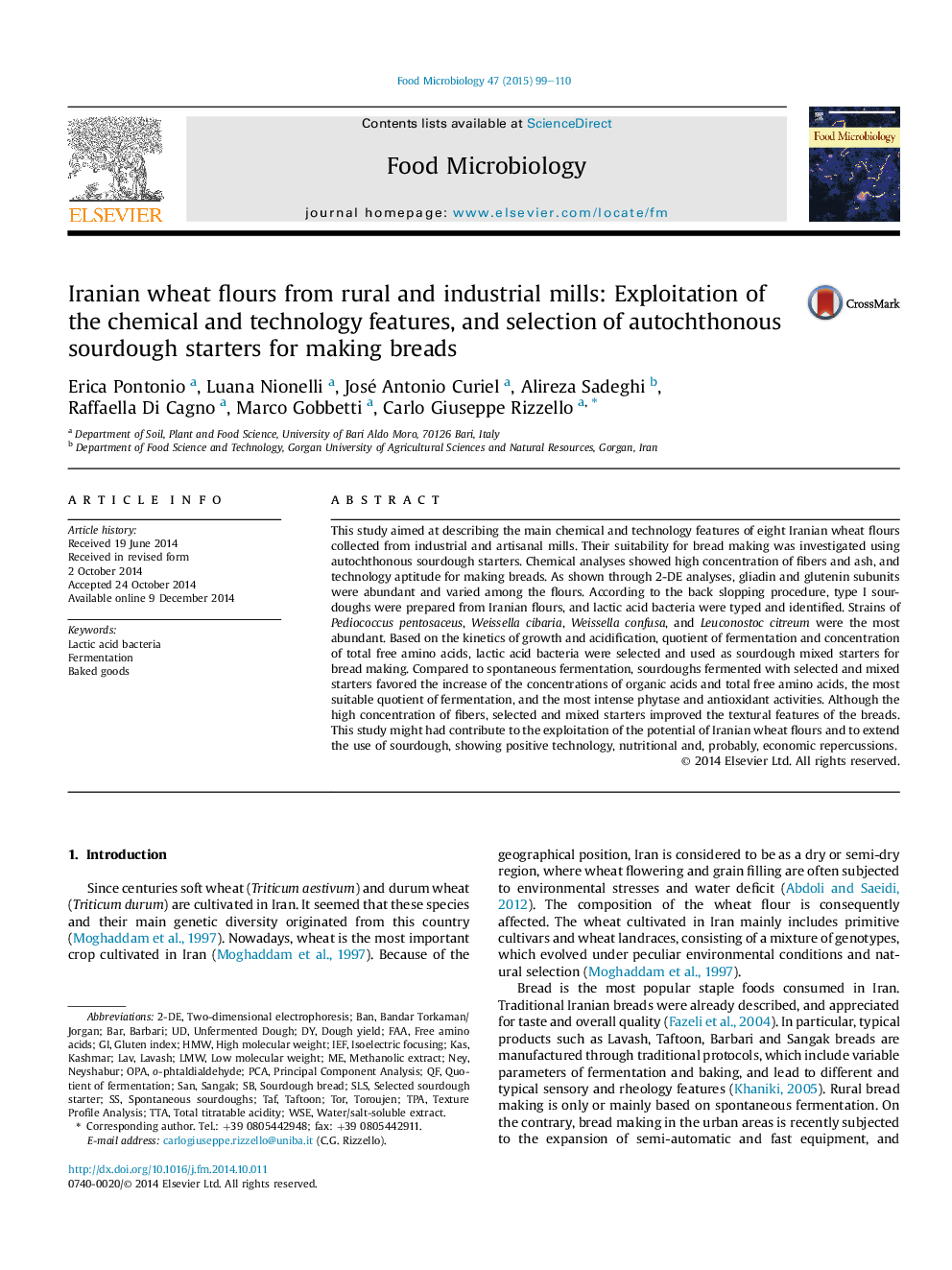| Article ID | Journal | Published Year | Pages | File Type |
|---|---|---|---|---|
| 4362855 | Food Microbiology | 2015 | 12 Pages |
•Iranian wheat flours were characterized on the basis of chemical characteristics.•Type I sourdoughs were prepared through back slopping procedure and characterized.•Microbiota was investigated and a pool of strains was selected as starters for fermentation.•The advantages of the use of selected starters and sourdough fermentation for bread making were demonstrated.
This study aimed at describing the main chemical and technology features of eight Iranian wheat flours collected from industrial and artisanal mills. Their suitability for bread making was investigated using autochthonous sourdough starters. Chemical analyses showed high concentration of fibers and ash, and technology aptitude for making breads. As shown through 2-DE analyses, gliadin and glutenin subunits were abundant and varied among the flours. According to the back slopping procedure, type I sourdoughs were prepared from Iranian flours, and lactic acid bacteria were typed and identified. Strains of Pediococcus pentosaceus, Weissella cibaria, Weissella confusa, and Leuconostoc citreum were the most abundant. Based on the kinetics of growth and acidification, quotient of fermentation and concentration of total free amino acids, lactic acid bacteria were selected and used as sourdough mixed starters for bread making. Compared to spontaneous fermentation, sourdoughs fermented with selected and mixed starters favored the increase of the concentrations of organic acids and total free amino acids, the most suitable quotient of fermentation, and the most intense phytase and antioxidant activities. Although the high concentration of fibers, selected and mixed starters improved the textural features of the breads. This study might had contribute to the exploitation of the potential of Iranian wheat flours and to extend the use of sourdough, showing positive technology, nutritional and, probably, economic repercussions.
